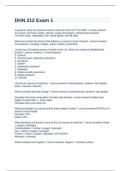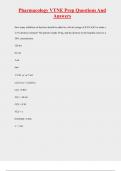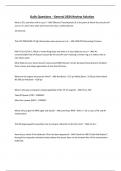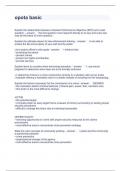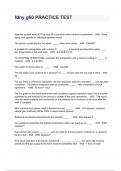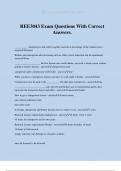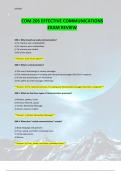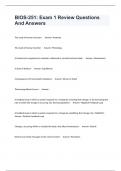Exam (elaborations)
DHN 212 Exam with correct answers 2024
- Course
- Institution
In general, what are foods we eat too much of in the US? Too little? correct answers Too much: red meat, candy, cheese, sugary beverages, refined grain products Too little: fruits, vegetables, fish, whole grains, low-fat dairy What are at least five factors that influence a person's food choic...
[Show more]
